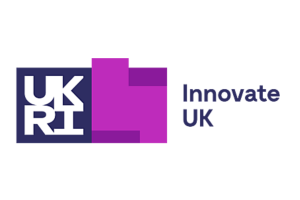Mindset XR Module 8: How to apply medical device standards to XR

Welcome to the Mindset Extended Reality (XR) for digital mental health programme learning resources, which include three series: medical regulation, clinical evidence and lived experience involvement. Mindset-XR is helping to catalyse the growth of immersive digital mental health solutions in the UK, through funding, tailored support and training. It is delivered by Innovate UK and the Health Innovation Network South London (HIN).
This series focuses on medical regulation, with key insights from Hardian Health. Across 10 modules, we provide an accessible introduction to people and companies that want to learn more about medical device regulation, with a focus on XR devices. Each module offers a high level overview of a different topic, including medical device regulation in the UK and EU, core medical device standards and overseas regulation. Each module includes additional resources to support your learning and a quiz to test your understanding.
Outline
What are the standards for XR?
An overview of key XR standards and relevant medical device standards.
What are the lifecycles, risk management and documentation for XR standards?
A closer look at lifecycles, requirements, risk management, control of change and traceability.
Multiple choice questions to test your understanding of the general XR and health software standards (non-medical device).
Welcome to Module 8: General XR and health software standards (non-medical device). In this section, we're looking at the standards for XR and for health software and how to apply them to medical device development and deployment. Topics include:
What are the standards for XR?
The ISO catalogue lists the standards related to XR. Keywords to search for include augmented reality (32 results) and virtual reality (42 results). These standards relate to the phases of design control for a medical device (see Module 4), such as The Design Control Procedure, which governs the Product Development Life Cycle (PDLC) or Software Development Life Cycle (SDLC).
It is important to go through the ISO catalogue standards to formulate a set of requirements of your own product. This will help you to satisfy any guidance in the standards that are relevant and helpful to your product. This will also strengthen the case that you are developing to the state of the art, a term used repeatedly in the EU Medical Device Regulation but most pertinently to this point as one of the General Safety and Performance Requirements, or GSPRs, that all medical devices have to satisfy in order to be certified, namely in this case GSPR number 17.2:
For devices that incorporate software or for software that are devices in themselves, the software shall be developed and manufactured in accordance with the state of the art taking into account the principles of development life cycle, risk management, including information security, verification and validation.
Relevant medical device standards - software
The key international standard for all medical devices and other healthcare software is IEC 62304, which you will use under its British guise as BS EN 62304. This standard defines the Systems Development Life Cycle (SDLC) processes that map into the design controls required for medical device quality assurance.
Wrapping around IEC 62304 is IEC 82304-1, or BS EN 82304-1, which explains how to apply the SDLC processes to software that you build to install on so-called ‘general computing platforms’. This can be taken to mean apps to install on AR headsets as well as apps to install on companion mobile device, laptops or other computers, such as servers in the cloud.
What are the lifecycles, risk management and documentation for XR standards?
Summary
There are standards for XR software that are useful to consider to drive the requirements for your own application. There are also standards that you must implement when realising medical devices including software as a medical device.
The standards help you to implement and coordinate design control, clinical evaluation and risk management to assure safety, effectiveness and cybersecurity of your device.
“The Software Development Life Cycle is for life, not just for Christmas” - you must control change throughout the lifetime of the device.
In this module, General XR and health software standards (non-medical device), we explored how to apply a standards-based approach to XR development. After using this resource, you should have a understanding of the following:
Quiz
PowerPoint: General XR and health software standards (non-medical device) - click to download

